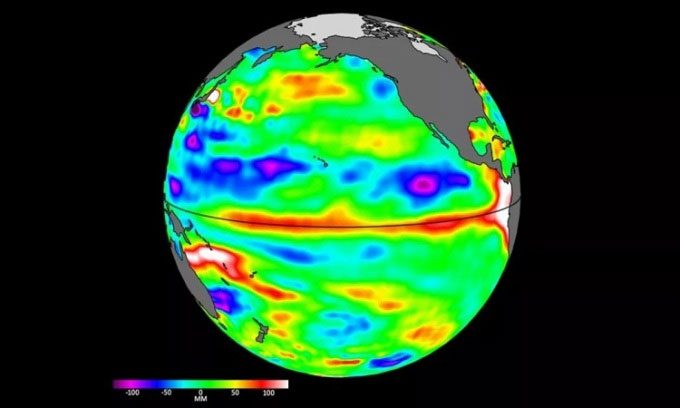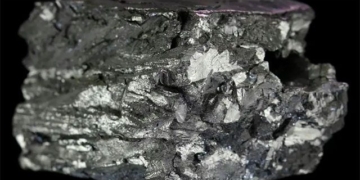The Sentinel-6 Michael Freilich satellite has detected Kelvin waves moving eastward across the Pacific Ocean, a phenomenon often viewed as an early sign of El Niño.
NASA has identified early signs of El Niño from space after one of its satellites observed a region of warm water in the Pacific moving towards the western coast of South America during March and April. Data from the Sentinel-6 Michael Freilich satellite, which specializes in monitoring sea levels, shows Kelvin waves traversing the Pacific. These long waves are only 5 to 10 cm high but span hundreds of kilometers in width. They are considered a precursor to El Niño when they form at the equator, transferring warm water layers to the western Pacific, as reported by Live Science on May 16.

Data from the Sentinel-6 satellite on April 24 shows higher and warmer sea surface temperatures at the equator and the western coast of South America. (Photo: NASA)
“We are watching El Niño like a hawk,” said Josh Willis, a scientist on the Sentinel-6 Michael Freilich project at NASA’s Jet Propulsion Laboratory (JPL). “If it is a strong El Niño event, the world will experience record warming.”
El Niño is part of the El Niño-Southern Oscillation (ENSO) climate cycle. Typically, trade winds push surface waters westward across the Pacific, moving warm water from South America to Asia. As warm water shifts, cold water rises to take its place. El Niño is associated with weakened trade winds, causing warm water to be pushed eastward. This significantly impacts weather patterns globally. In the U.S., the result is typically wetter conditions in the south and hotter weather in the northwest. Conversely, La Niña has the opposite effect, with strong trade winds pushing more warm water westward.
El Niño events typically occur every 3 to 5 years but can happen more frequently. The most recent El Niño occurred in 2019 and lasted for six months, from February to August. On May 11, representatives from the National Oceanic and Atmospheric Administration (NOAA) indicated that there is a 90% chance of El Niño occurring this year, lasting into the Northern Hemisphere winter. According to NOAA predictions, there is an 80% chance of a moderate El Niño, with sea surface temperatures rising by 1 degree Celsius, and a 55% chance of a strong El Niño, with sea surface temperatures increasing by 1.5 degrees Celsius.
In a statement on May 12, JPL reported that images taken by the Sentinel-6 satellite from early March to late April show Kelvin waves pushing warm water eastward, concentrated off the coasts of Colombia, Ecuador, and Peru. The red and white areas in the images indicate warmer water and higher sea levels. NOAA and NASA will continue to monitor conditions in the Pacific over the coming months to determine if and when El Niño will occur and its strength.
In April, scientists recorded the highest sea surface temperatures in history, with a global average temperature of 21.1 degrees Celsius. This record reflects the impact of climate change and the recent end of the last La Niña event. The combination of El Niño and extremely high ocean temperatures could lead to a series of records over the next 12 months.


















































